Darwin Year – 2009 – to commemorate two centuries since his birth and his links to the sea
The young man
During a visit in Cambridge, UK, in September 2009, the town reverberated with events in the occasion of the Darwin Year commemorating his 200th birthday. Countless public and academic events had already taken place and more is still to come. Christ College has lots of illustrated material on its website in honur of its illustrious student. All photos by C.E. Nauen.
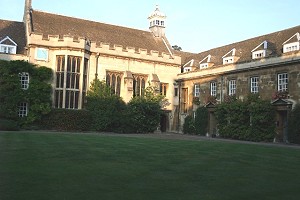
Charles Darwin(CD) was born on 12 February 1809 in Shrewsbury at 'The Mount' to Susanna Wedgwood, daughter of the potter Josiah Wedgwood, and Robert Waring Darwin, a physician. As his father wanted him initially to become a physician as well, he entered Edinburgh University in 1825. According to his autobiography, he was not particularly enthralled by his studies there and repeated in much of the abundant literature about him. Yet he learnt a lot about the science of his day from his mentor Dr. Robert Grant, an early scholar of evolution. It was here that he was introduced to principles of collecting and dissecting and classification, including marine organisms, a mainstay of science then. It was under the guidance of Grant that he dissected a lumpfish and wrote up his first scientific write-up, which already revealed his keen observation and grasp of the relationship between observed facts and scientific theory.
Another forming experience was his relationship with John Edmonton, "a former South American slave of African ancestry established in Edinburgh, from whom CD took private lessons in taxidermy... it appears to have opened his mind to respecting people outside his narrow class and ethnic background, thus enabling him to learn from the people he met in his later travels and readings, and, ultimately, to formulate a theory that encompassed all of humanity, and embedded us within the same nature. This contrasts with the divisive schemes propagated by less open-minded contemporaries, e.g. Louis Agassiz and Richard Ower, whose religious prejudices, combined with social opportunism, ultimately undermined their science." (D. Pauly, p. xviii, Darwin's Fishes - see below).
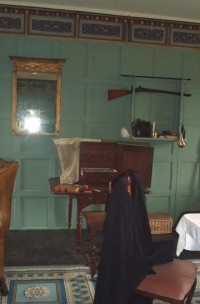 After two years his father realised that Charles did not want to be a physician and accepted an alternative career of clergyman for his son, conditional on taking at least a Bachelor of Arts (B.A.) degree from a university.
After two years his father realised that Charles did not want to be a physician and accepted an alternative career of clergyman for his son, conditional on taking at least a Bachelor of Arts (B.A.) degree from a university.
His grandfather and his cousin, Hensleigh Wedgwood, had both attended St. John's College in Cambridge, while Darwin's older brother Erasmus had already graduated in 1828 with a medical degree from Christ College. Moreover, William Darwin Fox, a second cousin and lifelong friend, was also a Christ's. So the family's connections to Cambridge University were well established.
Introduced by William Darwin Fox to Prof. John Stevens Henslow (1796-1861), Charles befriended Henslow and attended his botanical lectures. The two became good friends to the point, that Darwin was known as 'the man who walks with Henslow'.
From an early age, CD was keen on angling, an activity he pursued with great interest and dedication into his travelling years.
He also developed a passion for beetle collection and learnt about geology from Adam Sedgwick (1745-1873). Darwin was so fond of collecting beetles that he got a special cabinet made for his collection, here shown to the right with a net to catch insects.
It was Henslow, who recommended that the young Charles accompany Captain Robert FitzRoy on the surveying journey of HMS Beagle around the world.
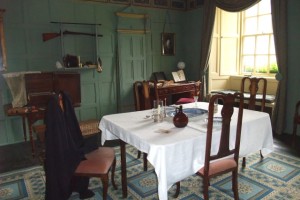
Christ College, one of the oldest Cambridge Colleges, founded in 1505 by Lady Margaret Beaufort, kept its doors open for a Darwin tour for much of 2009. Darwin spent two and a half years (from November 1829 to June 1831) in the First Court at Christ College.
As a young man from a wealthy family, Charles was a 'Pensioner', a student with private means occupying spacious quarters, which are today reserved for a lecturer. The room has been restored based on research into historic fabrics found in the room, correspondence and contextual knowledge about the period.
At the time heating was through the fireplace and illumination was through rapeseed oil lamps and wax or tallow candles. Gas lamps arrived only later in the century. Today, it looks like this.
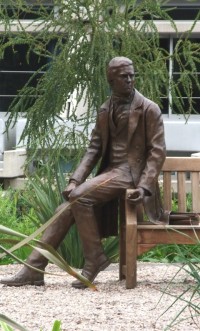 Darwin passed his B.A. exams on 22 January 1831, but remained at Cambridge until the summer. It was during this period that he read about scientific travel by Alexander von Humboldt, a long-time inspiration for his own work and travel.
Darwin passed his B.A. exams on 22 January 1831, but remained at Cambridge until the summer. It was during this period that he read about scientific travel by Alexander von Humboldt, a long-time inspiration for his own work and travel.
The invitation to join the voyage of the Beagle reached him while he was geologising in Wales. His father's initial opposition almost prevented it all from happening, but thanks to the good arguments of his cousin, Josiah Hedgwood II, his father consented and after an initial false start due to very bad weather, the party took off from Plymouth on 27 December 1831.
The young man that had the position of gentleman naturalist and geologist on HMS Beagle and company for captain Robert FitzRoy was not the Charles Darwin we now commemorate. Yet, he was a relentless worker, busying himself with observations, collections and experiments – very much in the mould of a modern scientists rather than following only in the footsteps of the classics. It was all about finding out and testing rather than devoutly referring to the ancients.
The sculpture of the young Charles by Anthony Smith is now permanently located in the Darwin Garden of Christ College. It was unveiled on Darwin's 200th birthday, 12 February 2009.
Exhibition 'Charles Darwin on Land and at Sea'
The exhibition entitled 'Charles Darwin On Land and At Sea' was on display in the library of Christ College from 21 February to 12 November 2009. The cover of the exhibition guide shows Mount Sarmiento in Argentina (1834), a watercolour by Conrad Martens (MS. Add. 7983: 32v). Martens was an artist whom the captain of the HMS Beagle, Robert FitzRoy, engaged as a draughtman towards the end of 1833 when the Beagle's original artist, Augustus Earle fell ill in Montevideo. Martens befriended Charles Darwin in a relation that lasted for a lifetime. He left the Beagle in Valparaiso in 1934 and travelled via Tahiti to settle in Sydney, Australia, in 1935. The Beagle arrived there in 1936 and FitzRoy and Darwin commissioned landscape paintings on Tierra del Fuego and the Pacific.
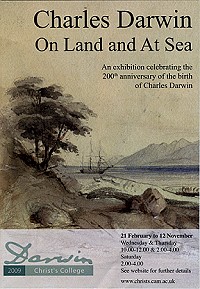 The exhibition shows a total of 129 pieces displayed largely in chronological order and starting with the family tree. The first part is focused on contextualising Darwin's stay at Christ College, including the account book, letters to William Darwin Fox from June 1828 and December 1877 and teaching materials in different subjects with particular emphasis on the meticulous drawings of botanical details by J.S. Henslow, the director of the Botanic Garden and Darwin's mentor.
The exhibition shows a total of 129 pieces displayed largely in chronological order and starting with the family tree. The first part is focused on contextualising Darwin's stay at Christ College, including the account book, letters to William Darwin Fox from June 1828 and December 1877 and teaching materials in different subjects with particular emphasis on the meticulous drawings of botanical details by J.S. Henslow, the director of the Botanic Garden and Darwin's mentor.
The next section of the exhibition focuses on items associated with the voyage of the Beagle, such as John Milton's 'Paradise lost', London, William Pickering, 1835, Darwin's 'Journal of researches into the natural history and geology of the various countries visited by H.M.S. Beagle', London, Henry Colburn, 1839; his'The structure and distribution of coral reefs', London, Smith, Elder & CO, 1842, his 'Geological observations on coral reefs, volcanic islands, and on South America: being the geology of the voyage of the Beagle, under the command of Captain Fitzroy, R.N., during the years 1832 to 1836', London, Smith, Elder & Co, 1851 and examples of correspondence addressed to Professor Henslow. This period and its intellectual climate focused on collecting, measuring, documenting parts of the world little known to Europeans is further illustrated by various (recent) drawings by Michael Wood on landscenes and animals, such as a 'View of coastal rainforest in Brazil' and 'Galapagos land iguana (Conolophus subcristatus)'.
The next sections are focused of successive stages of his long and highly productive life, his publications, the most important of which is doubtlessly 'On the origin of species by means of natural selection, or the preservation of favoured races in the struggle for life'. First edition London, John Murray, 1859. Other works are on display, by Darwin himself and of contemporaries who influenced his scientific understanding, such as Charles Lyell 'Elements of geology'. London, John Murray, 1841, but also Thomas Malthus 'An essay on the principle of population', London, J. Johnson, 1803. Contemporary editions of Darwin's 'The descent of man and selection in relation to sex', vols 1 and 2, both John Murray, 1871. Darwin's fruitful relationship with Thomas Henry Huxley, a British biologist, who became known as Darwin's bulldog for his advocacy of Darwin's theory of evolution, is naturally also represented through some of his writings.
The final sections of the exhibition illustrate through several items the celebrations of his life and work in earlier times and the influence Darwin exercised on modern science and society.
The curators provided little explanatory text, supposedly because there is no shortage of original texts of the man himself and of countless commentators, collaborators and also a few detractors. The principal merit is in showing some of the original works and objects which formed CD's intellectual, social, sicentific and physical environment and within which he worked relentlessly to reconcile facts and theory and probe beyond the surface. Even the historical library space contributes to resurrecting that atmosphere. So, it's very much a delight for the initiated. All told, looking at the historical originals does not fail to create a certain emotion following on the foodsteps of the great man.
The voyage of the Beagle formed Darwin for the rest of his life
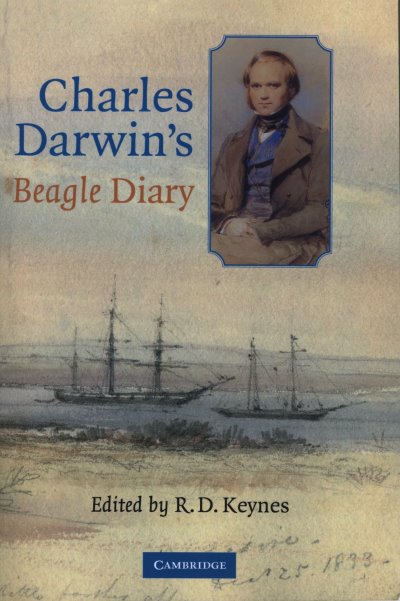 Charles Darwin kept a diary on the voyage of the Beagle in which he recorded his main occupations on an almost daily basis, thus conveying a sense of immediacy and allowing the reader to partake step by step in his experiences as the voyage unfolds. He sent sections regularly back through packet boats e.g. to his sister, Caroline Darwin, for sharing with family and friends. A new edition was edited by Richard Darwin Keynes and first published in 1988. The Beagle Diary traces the voyage from 1831 to 1836 transcribing the originally 751 ink written pages and contains accounts of every step of this often very exacting trip.
Charles Darwin kept a diary on the voyage of the Beagle in which he recorded his main occupations on an almost daily basis, thus conveying a sense of immediacy and allowing the reader to partake step by step in his experiences as the voyage unfolds. He sent sections regularly back through packet boats e.g. to his sister, Caroline Darwin, for sharing with family and friends. A new edition was edited by Richard Darwin Keynes and first published in 1988. The Beagle Diary traces the voyage from 1831 to 1836 transcribing the originally 751 ink written pages and contains accounts of every step of this often very exacting trip.
Darwin suffered quite badly from seasickness, but refers to it with characteristic understatement. In any event, even when he noted being idle, he actually kept himself busy with extraordinary dedication for studying the geology, the plants, animals and people he encountered during the years of this remarkable voyage. Early on, on the way to Cape Verde, he built a plankton net sketched in the diary and has this entry for 10th January 1832: "... I proved to day the utility of a contrivance which will afford me many hours of amusement & work. - it is a bag four feet deep, made of bunting, & attached to [a] semicircular bow this by lines is kept upright, & dragged behind the vessel. - This evening it brought up a mass of small animals, & tomorrow I look forward to a greater harvest." The editor comments that it "appears to be only the second recorded use of a plankton net, the first being that of J.V. Thompson a few years earlier, of which Charles Darwin may have learnt from Professor Grant in Edinburgh." The following day he notes "I am quite tired having worked all day at the produce of my net. - The number of animal that the net collects is very great & fully explains the manner so many animals of a large size live so far from land. - Many of these creatures so low in the scale of nature are most exquisite in their forms & rich colours. - It creates a feeling of wonder that so much beauty should be apparently created for such little purpose."
The diary is full of commentary about the sea, the conditions of the coast, the gales and bad weather suffered during the time surveying the seas around Tierra del Fuego, the Falkland Islands and Chiloe on the Pacific side. Naturally, for a sail ship as the Beagle this was even more essential than for today's engine-driven vessels. He also undertook many long walks on foot as well as a number of long inland excursions, many on horseback, in Brazil, Uruguay, different parts of Argentina down to Patagonia, Chile and other countries. The descriptions of the different immigrants and native people are remarkably liberal and open-minded for his time. There are constant annotations and critical interpretations of his observations, showing that he did not take either the accounts of earlier travellers or of whalers or local people he encountered at face value. He does refer to other sources than direct observation, but does so always with an open, critical mind, sometimes accepting, sometimes rejecting them, when he can not reconcile them with his own observation and background knowledge.
Among the most remarkable analyses made during the voyage of the Beagle and sketched out in the diary concerned the formation of atolls. Even before seeing one with his own eyes, he had hinted at the underlying phenomenon of subsidence of volcanic craters, when he interpreted his observations of sea shells in the high South American cordillera as indicative of subsequent rise and subsidence of marine rocks over extended periods of time. When visiting the Cocos Islands (then named Keeling Islands) in the Indean Ocean, he rightly identified the atolls "as the summit of a lofty mountain". He realised that the rock-making coral polyps "continue to build upwards, as the foundations of the isld from volcanic agency, after intervals gradually subsides". He correctly identified that the encircling reefs of the Pacific islands, such as Tahiti and Eimeo with their central peaks, which were visited by the Beagle and mentioned in the diary, are precursors of atolls (page 723 of the original diary). In these atolls the volcanic craters and vents do not reach the surface any more. Instead the corals form an often very deep-reaching ridge or calcarous material of organic origin, keeping a balance between subsidence of the crater and build-up of the corals.
The Beagle Diary is not very explicit on the sealife he observed and collected, however, when looking at his entire work and pursuing the hints further into his prolific other writing, Daniel Pauly elaborated an encyclopedia of "Darwin's Fishes" - see further below.
When he returned after more than five year's absence, Charles Darwin was already a celebrity, yet some of the most revolutionary insights from the study of the rich samples of rocks, animals and plants he had sent back throughout the voyage, were to come later.
The most scientifically oriented materials are contained in his scientific notebooks, which he used as important inputs for his later publications.
He entertained an extensive correspondence with family, friends and colleagues, in which he often voiced more private opinions. He also received from them critical comments and suggestions for future observations, as he himself acknowledged in the second edition of the Beagle Diary. The full text is available for downloading, chapter by chapter, here.
The map of the world showing the principal stations of the Darwin's circumnavigation on the Beagle can be seen here.
The most private expressions can be found in his personal diary.
Exhibition at the Fitzwilliam Museum, Cambridge, UK
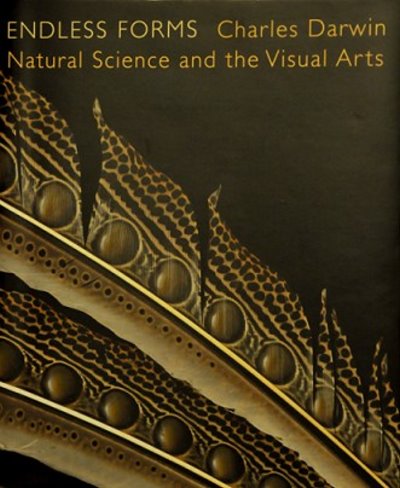 This exhibition was curated jointly by the Fitzwilliam Museum Cambridge, UK and the Yale Center for British Art, New Haven, US. It was on display at the Yale Center for British Art from 12 February to 3 May 2009 and at the Fitzwilliam Museum from 16 June to 4 October 2009. The catalogue accompanying the exhibition is edited by Diana Donald and Jane Munro and published in association with Yale University Press, New Haven and London.
This exhibition was curated jointly by the Fitzwilliam Museum Cambridge, UK and the Yale Center for British Art, New Haven, US. It was on display at the Yale Center for British Art from 12 February to 3 May 2009 and at the Fitzwilliam Museum from 16 June to 4 October 2009. The catalogue accompanying the exhibition is edited by Diana Donald and Jane Munro and published in association with Yale University Press, New Haven and London.
The exhibition explored the effect of Darwin's science and theories on the visual arts in the 19th century on both sides of the Atlantic (with emphasis on the US and Europe). In those days of lesser specialisation in the sciences and other spheres of life, as the exhibition guide rightly highlights, "[t]he interchange between science and art was a two-way street". Key science works, such as Darwin's 'On the origin of species by means of natural selection' (1959) and 'The descent of man' (1971), were read, publicised by the media and debated by a broad public. These works did not fail to trigger reactions from artists as well.
The exhibition catalogue is structured in four major sections with a total of 12 chapters: (a) Darwin at home: Observation and taste at Down House; (b) Darwinian theory and the picturing of the natural world; (c) The descent of humankind: Animal ancestry, cultural evolution and racial theory; and (d) Darwin, aesthetic theory and nineteenth-Century art movements.
The exhibition touched comparatively little on marine and coastal topics and was richer in materials of how the notion of the 'survival of the fittest' had inspired art work on such representations as agression by predators on game. Its extension to 'social Darwinism' was reflected in paintings depicting destituted workers and people in poor houses supposedly as less fit. Indeed, Darwin himself had taken a stand against slavery and shown openness of mind towards people of cultures and social status other than his own. He had been aware of the potential contradiction between the principle of natural selection of the fittest on random variation and cooperation among humans. The apparent puzzle has been explored ever since in social science research and several other natural science disciplimes exploring Darwinian principles as an explanatory pattern. The argument is being settled in recent publications in favour of evidence for a selective advantage for cooperation rather than competition or non-cooperation, even when cooperation extends beyond direct kin [add reference].
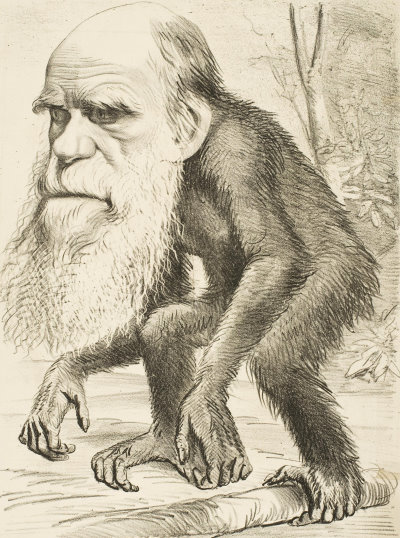 The section dedicated to Darwin's book 'The descent of man' showed varied series of photos and lithographs of people of different ethnic and cultural background. The catalogue discusses some of the derivations feeding racism. Clearly the book captured the imagination of the public - even to this day - and some of the pieces on display show how far the scientific debate engaged the wider public.
The section dedicated to Darwin's book 'The descent of man' showed varied series of photos and lithographs of people of different ethnic and cultural background. The catalogue discusses some of the derivations feeding racism. Clearly the book captured the imagination of the public - even to this day - and some of the pieces on display show how far the scientific debate engaged the wider public.
Among the cartoons of the day reflecting on the implications of Darwin's book is "A venerable orang-outan" depicting an ape with Darwin's head that appeared in The Hornet, 22 March 1871. A variation on the theme, this time showing Darwin in his characteristic elevated position on a book in an armchair and with one ape hand and leg appeared in Vanity Fair, 30 September 1871, under the title 'Men of the day'. It was also on display in poster size in the exhibition.
Modern day humour inspired by Darwin or by what passes as evolution gets still expressed also through cartoons. A collection of caricatures, cartoons and reflections on how visual information influences and propagates understanding of science and other resources is available here (Blog of Michael D. Barton).
The extent to which the science engaged the public, and was discussed in all kinds of general media of the days of Darwin was remarkable. It was not only the subject of conversation among a few specialists. Darwin's findings influenced areas of enquiry and the arts well beyond the natural history and adjacent fields. The exhibition was a contribution towards engaging again a wider public in the science and its many ramifications.
The extent to which science (and technology) affect every aspect of our lives and our environment today more than justify these efforts. One would certainly wish that all humankind nowadays had access to up-to-date science and its results to navigate in the turbulent waters of bringing human civilisations back into balance with their natural environments and with one another.
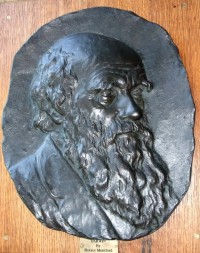 Commemorative plate by Horace Montford of the mature Charles Darwin in the entrace hall of Christ College, Cambridge, UK.
Commemorative plate by Horace Montford of the mature Charles Darwin in the entrace hall of Christ College, Cambridge, UK.

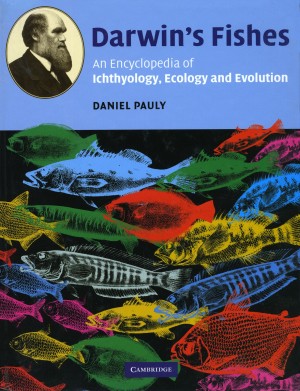 Thursday 12th February 2009: To mark Charles Darwin’s 200th birthday Dr Daniel Pauly, Professor of Fisheries at the University of British Columbia and a world expert on fish conservation, opened Darwin’s Fishes, the major exhibition of the Bath Royal Literary and Scientific Iinstitution’s (BRLSI) 2009 Darwin and Beyond programme.
Thursday 12th February 2009: To mark Charles Darwin’s 200th birthday Dr Daniel Pauly, Professor of Fisheries at the University of British Columbia and a world expert on fish conservation, opened Darwin’s Fishes, the major exhibition of the Bath Royal Literary and Scientific Iinstitution’s (BRLSI) 2009 Darwin and Beyond programme.
After cutting a fish-shaped cake made specially for the evening by three local artists, Prof Pauly gave a lecture entitled From Darwin’s Fishes to Jenyns’ Fishes— Ichthyology and the Voyage of the Beagle, describing the marine aspects of Charles Darwin’s voyage around the world.
Among the audience were the Mayor of Bath and a relative of the Rev Leonard Jenyns, Darwin’s friend and collaborator who left his library and collections to the BRLSI. For more information about the opening of this exhibition, click here.








